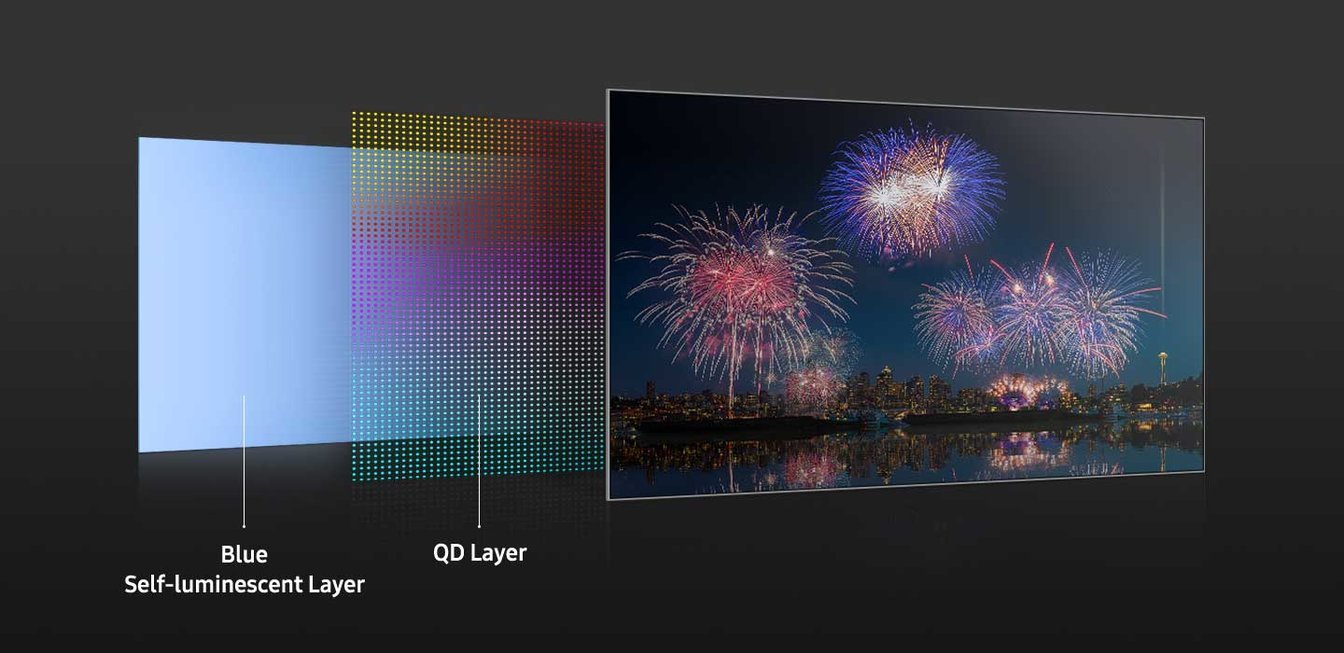Samsung Display has provided some big hints about the possible specifications of its upcoming new QD-OLED TVs, and the biggest takeaway is they'll likely only be available in 4K resolution.

The reveal comes from a new product page for the QD-OLED panels published on Samsung Display’s website, which was first spotted by HDTVTest reviewer Vincent Teoh earlier this week.
QD-OLED is a new display technology that certainly holds a lot of promise. It combines the Quantum Dots used in Samsung’s most advanced LCD panels with the OLED displays that have been popularised by LG Electronics. The idea is that by merging the two technologies, QD-OLED displays contrast levels that match those of LG’s OLED panels, with much higher brightness.
Samsung’s QD-OLED TVs are widely expected to be launched next year, but it now seems unlikely that we’ll see any 8K models hitting the shops at that time. Previously, it was hoped that Samsung might make its first QD-OLED TVs 8K resolution in order to justify their inevitable high price tag.
That's looking a lot less likely now. The product page, while it doesn’t make any definitive statements regarding resolution, notably only talks about the capabilities of 4K resolution QD-OLED displays – there’s no mention of 8K at all. Teoh said this ties in with a press release from the research firm UBI Research this week that stated that Samsung Display is ramping up production of 4K QD-OLED panels ahead of next year’s roll out.
Given that QD-OLED is a very new technology, production yields will likely be on the low side, which makes it seem highly unlikely Samsung Display would take a risk by diversifying its resources to make both 4K and 8K versions of the displays.
There were a few more clues as to what’s in store for QD-OLED beyond just the resolution. The product page contains a chart that appears to suggest a peak brightness of 1,000 nits. That’s potentially a big deal, as one of OLED’s major weaknesses is its lack of brightness compared to LCD.
But don’t get too excited just yet, for Teoh warns that in all likelihood the effective brightness of the displays will probably be around half that number. He points out that Samsung’s Neo QLED TVs for example, are marketed as hitting 3,000 to 4,000 nits peak brightness, but they only ever actually achieve that for a few seconds in especially dynamic scenes. In most conditions, their output is usually around the 1,500 or 1,600 nits mark.
The page also appears to indicate the QD-OLED displays will offer up to 80% BT.2020 Color Volume, which compares well to the 60% volume that most LCD TV displays are capable of.

Last but not least, Samsung Display is promising is a new kind of anti-reflective technology that will reduce reflection to a lower level than any current TV on the market. It's another bold promise, though little was said about the exact make up of this new tech, which means as always we will just have to wait and see how good it is. But if Samsung Display lives up to its word Teoh said it will almost certaily make QD-OLED a much better option for daytime viewing than existing OLED TVs available today.
Watch the full video to learn more about what we can expect from QD-OLED: